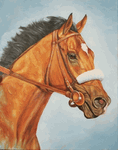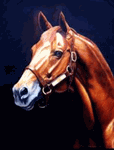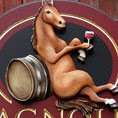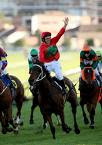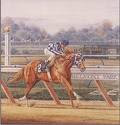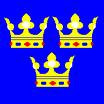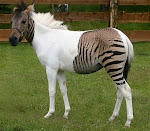 |
| FAIR GROUNDS |
| Lou Hodges Jr. photo |
by Jeff Lowe
Five horses have been euthanized because of catastrophic injuries during training hours at Fair Grounds since January 17, including two on Tuesday.
Tom David, D.V.M., equine medical director for the Louisiana State Racing Commission, said the injuries were varied and unusual.
“There was no real pattern to them; they were all horses that basically everyone knew they were sound going into the work,” David said. “They were not the usual breakdowns that you see.”
Three horses trained by Tom Amoss were euthanized over the weekend. Two occurred early Saturday morning, and the other was on Sunday. Amoss said he had not had a single catastrophic injury in his 50-horse stable in more than a year.
In response to the breakdowns, Amoss said he voluntarily turned over veterinary records for his three horses to racetrack officials and asked them to speak with the riders involved and with his stable veterinarian.
“Those horses were in excellent health, and we’re shocked and saddened by the whole thing, but we wanted to [submit the records] so the Fair Grounds would explore every possibility as to why this occurred,” Amoss said. “I’m extremely puzzled. Quite frankly, I’m embarrassed and I’m uncomfortable talking about it, but at the same time I don’t want this to happen to any more horses. … If it’s a freak deal, then it’s the freakiest deal I’ve ever been around.”
David said he examined veterinary records for Amoss’s horses and found no warning signs of a catastrophic injury.
“I can’t figure out what’s going on,” David said. “One of them broke a tibia—obviously those are stress fractures that you hardly ever diagnose, many times until they do break. After the horse broke that, it got off that and on the diagonal front leg, it broke a radius and I’ve never seen a horse break a radius.
“Another one was a distal condylar [fracture] in a back leg, which occasionally happens, but it is certainly not the norm. The third one snapped the cannon bone right in two.”
Bernie Flint trains one of the horses who suffered a fatal injury on Tuesday.
“The track surface had nothing to do with it,” Flint said. “She was just galloping and it wasn’t even a fast gallop and she broke her shoulder. … I don’t know about the rest of them, but I can tell you for sure that the surface had nothing to do with mine. This was a sound filly; she was an allowance-type horse. It’s just one of those things that can happen in racing.
“I think the surface has been very safe. I think it’s one of the safest surfaces I’ve ever seen. Accidents happen.”
Brian Jabelmann, who became track superintendent on December 31, confirmed the five fatalities but deferred public comment to Eric Halstrom, the track’s general manager of racing.
Fair Grounds planned to send samples of the dirt surface for analysis by a soil engineer on Wednesday.
“From our end, we’re just working to make sure the surface is as safe as possible,” Halstrom said. “The best thing we can do is to keep talking to the horsemen and the people on the horses, and right now the response we’re getting is that the track is very good.
“We’re obviously concerned any time a horse gets hurt, regardless of what the cause is. We’re doing a lot of this by walking around and talking to the people who are on the surface.”
Jockey Ramsey Zimmerman broke his collarbone when one of Amoss’s horses, Squallacious, broke down on January 17.
Zimmerman was scheduled for surgery on Wednesday afternoon. He will most likely be sidelined for four to six weeks, according to his agent, Paul Pembo.
Squallacious finished second in the 2006 Hollywood Breeders’ Cup Oaks (G2) and La Brea Stakes (G1) for owner-breeder Rick Trontz. She had not raced since a fifth-place finish in the Santa Monica Handicap (G1) in January 2007.
Unraced three-year-old filly Sheer Hope was the other Amoss horse who was fatally injured on Saturday.
Amoss said the only difference in the track maintenance that he has noticed since Jabelmann took over is the amount of work performed on the surface.
“The one variable, and I don’t know if it’s good or it’s bad, is that we have a new track man, and he works the track a lot, much, much more than any time I can recall before,” Amoss said. “That may be a good thing—I don’t know—but he is constantly on the track.”
David said he had not yet received specific information on the fifth horse, who died on Tuesday.
“Everyone is happy with the track surface,” David said. “You ask the riders, the trainers and no one sees a problem in the surface that would precipitate this at all. It’s just, I hope, a rash all at once, the way things like that go sometimes.”
.





